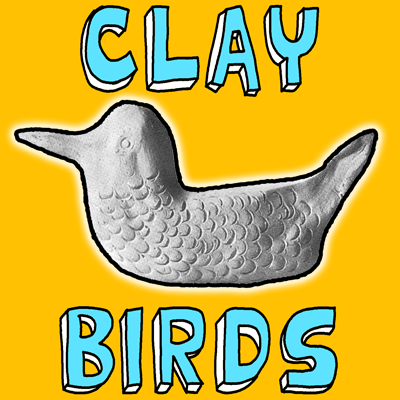I have a fun clay activity for you. Today I’m going to show you how to make Clay Birds…. or really any Clay Animal you would like to make. The only material you will need for this craft is clay…. that’s it. The first sight of clay as it is taken from a crock or plastic bag is enough to get kids interested. Show them to roll, flatten, remove air bubbles, and what to do so the clay will not dry too fast and crack. This first clay project serves to give kids experience with the clay, and incidentally endears it to them. So, grab some clay and let’s get started.
Check out our other Clay & Sculpting Craft Ideas
Materials Needed
Clay
Step 1
Start with a ball or an egg-shaped lump of clay, modeling it with the palms of the hands – but not working over long on it.
[ad#ahc]
Step 2
Model in a solid mass with no detail.
Step 3
Begin shaping the clay into an animal.
Step 4
Give the animal some detail…. Shape head, wings, and tail if you are making a bird. If an animal, keep legs and ears close to the body.
How to Work with Clay
STORE natural and water-base clays in galvanized garbage buckets, earthenware crocks, jars with screw-top lids, or plastic bags. Avoid high temperatures, but do not let the clay freeze.
WHEN WORKING with clay, keep the excess covered with a damp cloth, or return it to the covered crock or can in which it is kept. Pieces will soften if soaked in water.
CLAY SHRINKS during the drying process, preventing the use of any type of permanent framework. Children can note shrinkage in drying and make things large enough to allow for this.
LIMIT the child to making compact, bulky figures without delicate appendages—unless there is plenty of time for him to experiment and find out these appendages fall off. Show him how to pull out head, arms, and legs for figures of people and animals.
COVER tables or desks with paper or cardboard when clay work is being done. For the surface of a permanent clay area, a piece of hall-runner linoleum looks well and is practical. Wooden boards are sometimes used for working surfaces.
Technorati Tags: clay, clay crafts, clay crafts for kids, clay activities, clay activities for kids, sculpting crafts, sculpting, sculpting activities, sculpting crafts for kids, clay animals, clay birds





